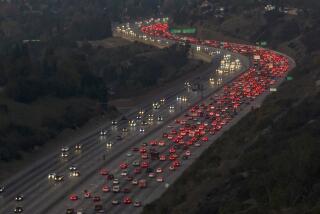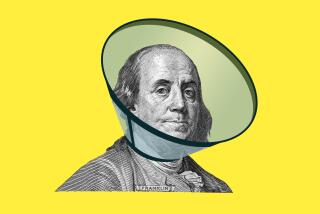Charges for Medical Care Soaring
- Share via
QUESTION: My elderly mother has had one medical problem after another this year, and it seems to me that there is a price increase every time I have to take her to the doctor’s office. Is it my imagination or is the cost of medical care rising faster than other costs?--W.E.
ANSWER: You aren’t imagining. According to the U.S. Department of Labor’s records, health-care costs soared 7.7% last year, compared to a meager 1.1% rise in the consumer price index.
Nor do health-care specialists expect that trend to reverse any time soon, in part because the nation’s elderly population--which demands more health-care services than the overall population--continues to grow.
These rising costs are a double-edged sword for the elderly. They require more medical care, but they often are under-insured or have no medical insurance whatever to defray the cost. The elderly and the poor account for the bulk of the 35 million Americans who had no health insurance coverage in 1985, the most recent year for which government statistics are available.
Q: I live in Los Angeles, and my sister lives in New York, and we’re having an argument over car upkeep costs in the two cities. She claims it is more expensive to have a car in Los Angeles, and I say it’s the reverse. Can you resolve this?--P. R.
A: It costs more to drive and maintain a car in Los Angeles than anywhere else in the United States.
Studies conducted during the past year by several business and consumer consultants vary slightly in their cost-per-mile findings, but they all conclude that Los Angeles leads the pack in the expense of car upkeep, followed closely by San Francisco and New York. The studies consider average costs for these items in each city: the purchase price of the car, gasoline and insurance, taxes, parking, licensing, interest charges on car loans and upkeep.
A study just released by the National Institute of Business Management found that the average cost of running a car in Los Angeles is 63.25 cents per mile. San Francisco finished second at 63.17 cents and New York was third with 62.03 cents.
Rounding out the top 10 were Miami, 58.01 cents; Denver, 57.41 cents; Chicago, 55.35 cents; Seattle, 52.60 cents; Atlanta, 51.62 cents; St. Louis, 51.58 cents, and Detroit, 50.47 cents.
Q: I mailed my contribution to an IRA several days before the deadline and promptly received a receipt acknowledging that I had contributed to my account before April 15. But a few days later, I was notified that the deposit hadn’t actually been recorded until April 16. Do I get the tax deduction or don’t I?--R. D.
A: As long as the financial institution holding your account received the money by April 15, your deduction is intact. Just be sure to keep the first receipt.
Q: Last year, you wrote that Tax Freedom Day arrived on May 1. Was it the same this year?--H. A.
A: Although overall income tax rates have declined, the so-called Tax Freedom Day arrived three days later this year--May 4.
Tax Freedom Day, so named by the Tax Foundation, signifies the day that American workers stop working for the tax collector and start having access to the money in their paychecks. Until May 4, the Tax Foundation calculates, every cent earned by the average U.S. employee went to pay his or her federal, state and local taxes.
Another way to view this breakdown is that a typical worker spends two hours and 43 minutes every day working to pay his or her taxes.
More to Read
Inside the business of entertainment
The Wide Shot brings you news, analysis and insights on everything from streaming wars to production — and what it all means for the future.
You may occasionally receive promotional content from the Los Angeles Times.










